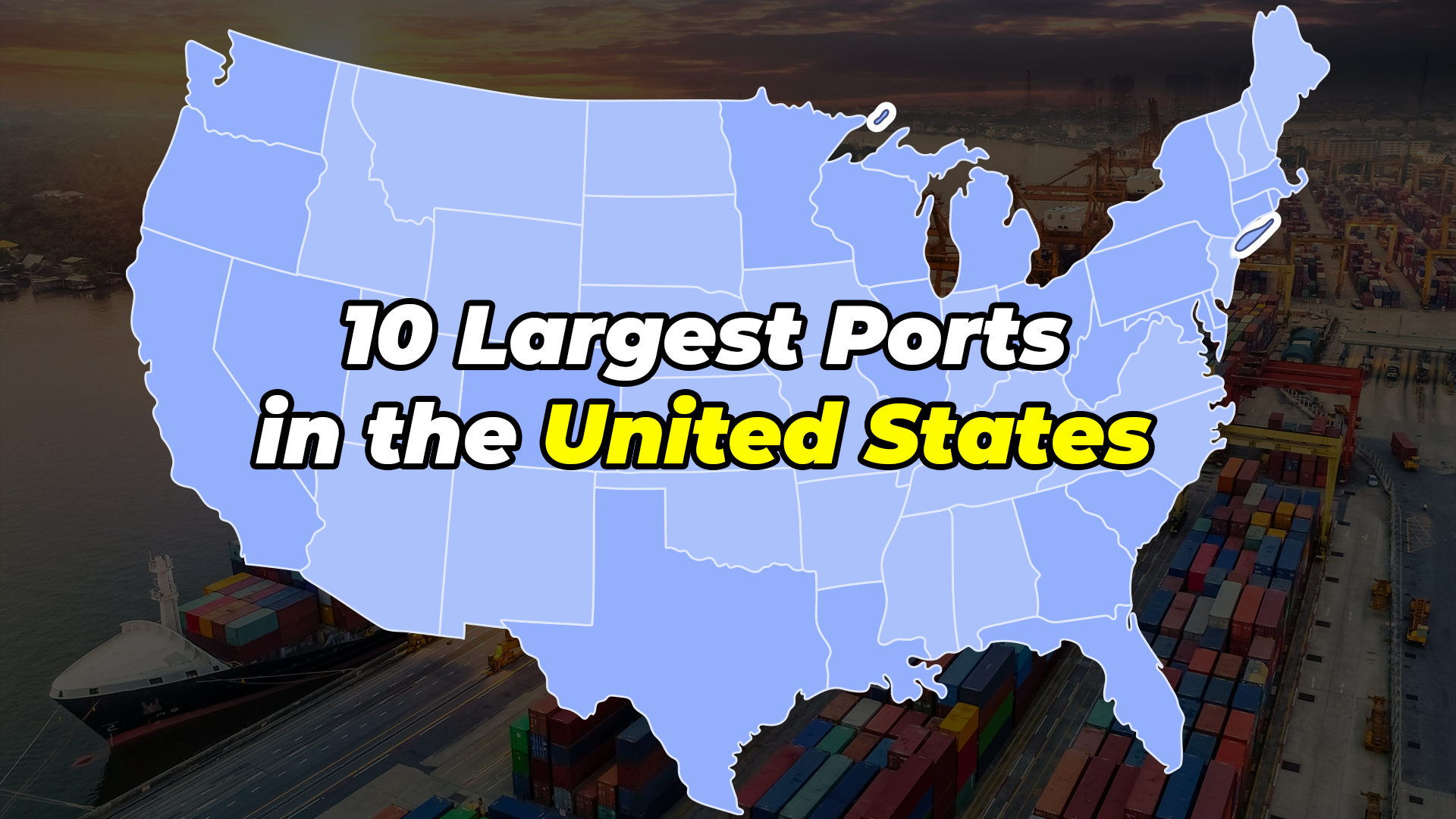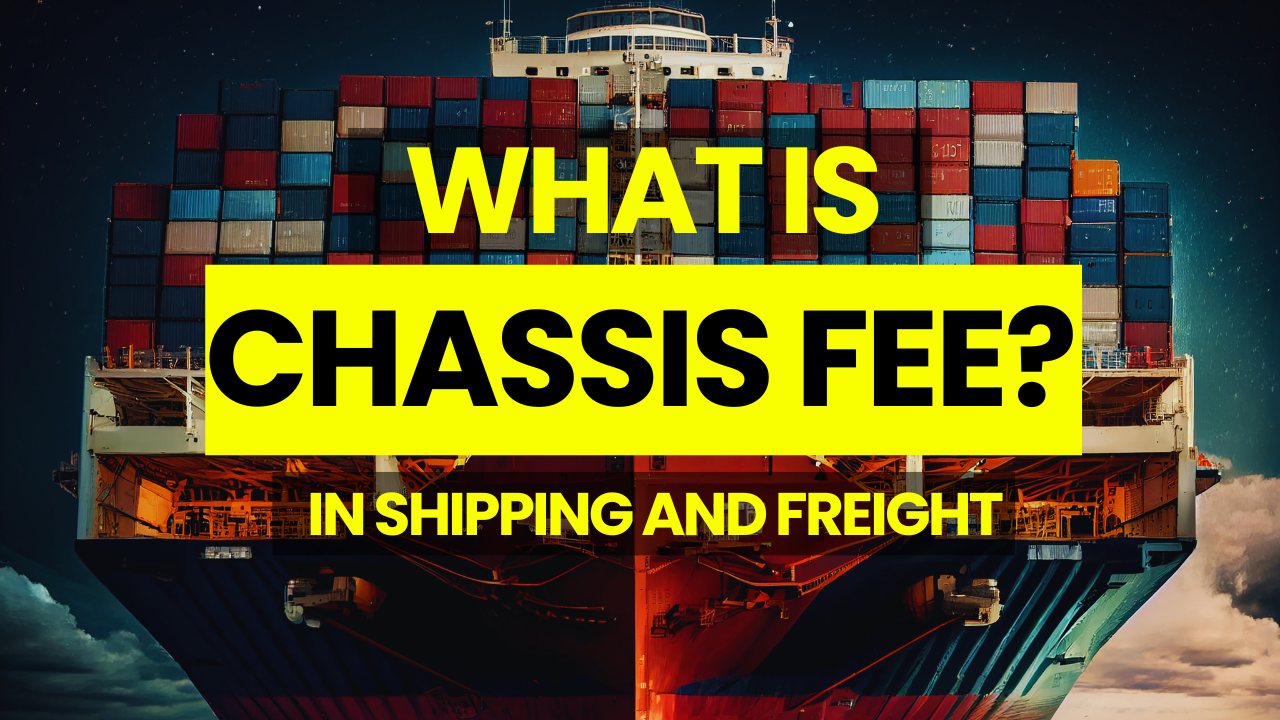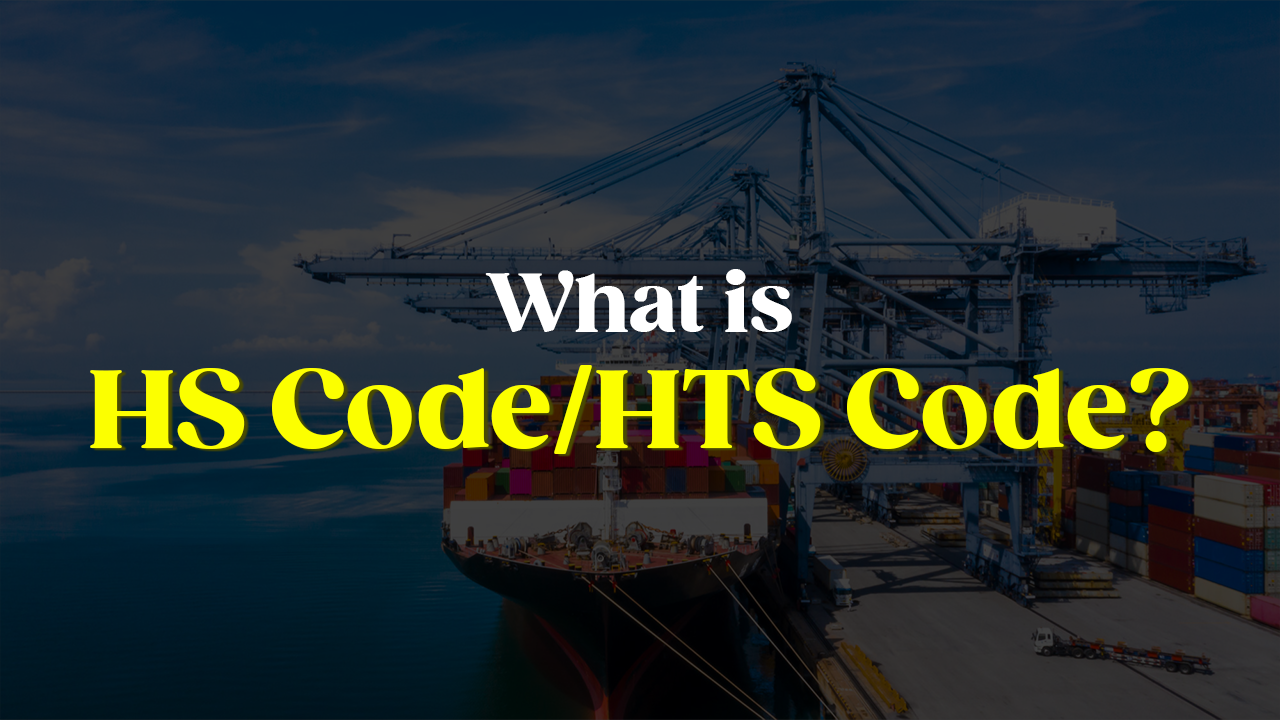Are you looking to find out the largest port in the United States? Well, you are at the right location. This guide has got you covered, from the ranking of ports to the different questions that you might have in your mind.
Well, before jumping into the list of the largest ports, know that this list is based on TEU throughput. Details can be found at the bottom of the list for this ranking.
1. Port of Los Angeles
The port of Los Angeles is the largest port in the United States, with a total of 10+ Million TEUs handled in 2022. Located in San Pedro Bay, the port of Los Angeles serves as a major gateway for Asian imports, particularly from China.
The port of Los Angeles is known for its exceptional infrastructure and efficiency, which makes it an ideal choice for freight forwarding and international trade. Its proximity to major highways and railroads, as well as its status as a major gateway for trade with Asia, make it an essential hub for global commerce.
The details of the Los Angeles Port are as:
| Port of Los Angeles | |
|---|---|
| Business/Leading trading partners: | China and Hong Kong, Japan, South Korea |
| Size | 7,500 Acres, 43 miles waterfront. |
| Annual cargo tonnage: | 222 million metric revenue tons |
| Number of Terminals: | 25 |
| Container throughput: | 10 million TEUs |
| Type of Cargo | Animal feed, paper, soybeans, fabrics/raw cotton, scrap metal, furniture, auto parts, apparel, plastic, footwear, and electronics |
2. Port of Long Beach
Long Beach is the second-largest port in the United States, handling 8,174,231 TEUs in 2022. It is located adjacent to the port of Los Angeles in San Pedro Bay, and together they form the largest port complex in the United States.
The port of Long Beach is known for its deep-water channels, which allow it to accommodate the largest container ships in the world. This makes it an ideal port for shipping large volumes of goods across the Pacific Ocean. Its modern facilities and commitment to sustainability also make it an attractive option for freight forwarding companies.
The Details of the Long Beach Port are as:
| Port of Long Beach | |
|---|---|
| Business/Leading trading partners | Major gateway for Asian trade |
| Size | 3200 acres |
| Annual cargo tonnage | 78.2 million metric revenue tons |
| Number of terminals | 6 |
| Container throughput | 8 million TEUs |
| Type of Cargo | Cotton, meat, grocery, bulk grain, dairy products, hides, and skins. Imports include beverages, beer/ale/wine, frozen and canned fish, and meat |
3. Port of New York/New Jersey
The port of New York and New Jersey is the third-largest port in the United States, with 7,796,634 TEUs handled in 2022. It is the largest port on the East Coast and serves as a major gateway for European and Asian imports.
The port of New York and New Jersey is known for its extensive network of shipping channels and its ability to handle large volumes of cargo. It is also known for its proximity to major population centers on the East Coast, making it a convenient gateway for imports and exports.
The Details of the New York/New Jersey Port are as:
| Port of New York/New Jersey | |
|---|---|
| Business/Leading Trading Partners | China, India, Germany |
| Size | 7,500 Acres, 43 miles waterfront. |
| Annual Cargo Tonnage | 74 million metric revenue tons |
| Number of Terminals | 10 |
| Container Throughput | 7.7 Million TEUs |
| Type of Cargo | Petroleum, wood, beverages, vehicles, scrap metal, bulk and break bulk cargo |
4. Port of Savannah
The port of Savannah is the fourth-largest port in the United States, with a total of 5,236,599 TEUs handled in 2022. It is located in Georgia and serves as a major gateway for trade in the southeastern United States.
The port of Savannah is known for its state-of-the-art infrastructure and its commitment to customer service. It is also known for its deep-water channels and its ability to accommodate large container ships.
The Details of the Savannah Port are as:
| Port of Savannah | |
|---|---|
| Business/Leading Trading Partners | China and Hong Kong, Japan, South Korea |
| Size | 1400 Acres in total |
| Annual Cargo Tonnage | 41 million |
| Number of Terminals | 2 – 5 |
| Container throughput | 5 million+ TEUs |
| Type of Cargo | Auto industry, heavy machinery, agricultural products |
5. Port of Houston
The port of Houston is the fifth-largest port in the United States, handling 4,843,327 TEUs in 2022. Located in Texas, the port of Houston is a major gateway for trade with Mexico and Latin America.
The port of Houston is known for its strategic location and its status as a major gateway for trade with Mexico and Latin America. It is also known for its efficient operations and its commitment to sustainability.
The Details of the Los Angeles Port are as:
| Port of Houston | |
|---|---|
| Business/Leading trading partners | Mexico, Brazil, China, South Korea, and The Netherlands |
| Size | 25 mile coastline |
| Annual cargo tonnage | 247 million metric revenue tons |
| Number of terminals | 8 |
| Container throughput | 4.8 million TEUs |
| Type of Cargo | Petroleum, palm oil, ethanol, kerosene, juices, milk, and wine |
6. Port of Seattle/Tacoma
The port of Seattle/Tacoma is the sixth-largest port in the United States, handling 4,163,253 TEUs in 2022. Located in Washington, the port serves as a gateway for trade with Asia and Alaska.
The port of Seattle/Tacoma is known for its strategic location on the West Coast and its proximity to major population centers in the Pacific Northwest. It is also known for its commitment to sustainability and its innovative approach to cargo handling.
The Details of the Seattle/Tacoma Port are as:
| Port of Seattle/Tacoma | |
|---|---|
| Business/Leading trading partners: | Maritime trade |
| Size | 2400 Acres. |
| Annual cargo tonnage: | 23 million |
| Number of terminals: | 5 |
| Container throughput: | 4.1 million TEUs |
| Type of Cargo | Oilseeds and grains, machinery, computers, Vehicles to clothes and toys to various kinds of equipment |
7. Port of Virginia
The port of Virginia is the seventh-largest port in the United States, with a total of 3,516,550 TEUs handled in 2022. It is located in Norfolk, Virginia, and serves as a major gateway for East Coast trade with Asia.
The port of Virginia is known for its deep-water channels and its ability to handle large volumes of cargo. It is also known for its extensive network of transportation infrastructure, including highways, railroads, and airports.
The Details of the Virginia Port are as:
| Port of Virginia | |
|---|---|
| Business/Leading trading partners: | China and Hong Kong, Japan, South Korea |
| Size | 161 Acres |
| Annual cargo tonnage: | 61 million |
| Number of terminals: | 5 |
| Container throughput: | 3.5 million TEUs |
| Type of Cargo | Coffee, vodka, bitters, brandy, cognac, vegetables, and nuts. |
8. Port of Charleston
The port of Charleston is the eighth-largest port in the United States, handling 2,648,856 TEUs in 2022. Located in South Carolina, the port of Charleston serves as a major gateway for trade in the southeastern United States.
The port of Charleston is known for its historic charm and its commitment to customer service. It is also known for its strategic location on the East Coast and its ability to accommodate large container ships.
The Details of the Charleston Port are as:
| Port of Charleston | |
|---|---|
| Business/Leading trading partners: | China and Hong Kong, Japan, South Korea |
| Size | 155 Acres |
| Number of terminals: | 6 |
| Container throughput | 2.6 – 2.85 million TEUs |
| Type of Cargo | Automobiles and bulk commodities such as coal and forest products |
9. Port of Oakland
The port of Oakland is the ninth-largest port in the United States, handling 2,546,793 TEUs in 2022. Located in California, the port of Oakland serves as a major gateway for trade with Asia and the Pacific Rim.
The port of Oakland is known for its modern facilities and its commitment to sustainability. It is also known for its strategic location on the West Coast and its ability to accommodate large container ships.
The Details of the Oakland Port are as:
| Port of Oakland | |
|---|---|
| Port of Oakland | |
| Business/Leading trading partners: | Asia |
| Size | 1,300/2000 Acres waterfront |
| Number of terminals: | 4 |
| Container throughput: | 2.5 million TEUs |
| Type of Cargo | Dried fruits and nuts, wine, and other beverages |
10. Port of Miami
The port of Miami is the tenth-largest port in the United States, handling 1,234,110 TEUs in 2022. It is located in Florida and serves as a major gateway for trade with Latin America and the Caribbean.
The port of Miami is known for its proximity to Latin America and the Caribbean, making it a convenient gateway for trade with these regions. It is also known for its modern facilities and its commitment to customer service.
The Details of the Miami Port are as:
| Port of Miami | |
|---|---|
| Business/Leading trading partners: | China, Europe, South America, Central America, and the Caribbean |
| Size | 518 Acres |
| Annual cargo tonnage: | 7.42 Million |
| Number of terminals: | 4 |
| Container throughput: | 1.2 million TEUs |
| Type of Cargo | Automobiles, breakbulk cargo, Knit sweaters and T-shirts, isolated wires and Non-alcoholic beverages. |
That completes the list. Now let’s discuss some frequently asked questions regarding these ports.
How is a Port Ranked?
A port’s ranking for being the “largest” is typically measured by its total container throughput, which is expressed in terms of TEUs (Twenty-foot Equivalent Units). TEUs are a standard unit of measurement used in the shipping industry to quantify the volume of cargo transported in a single shipping container that is 20 feet long.
The total TEU throughput of a port is calculated by adding up the number of TEUs handled by the port over a given period of time, usually a year. Ports that handle a high volume of TEUs are considered to be larger and more significant than ports that handle fewer TEUs.
The TEU ranking of ports provides an indication of their importance in global trade and shipping. Ports that are ranked higher in terms of TEU throughput are typically considered to be major gateways for trade, with significant economic impact and strategic importance.
It is worth noting that TEU throughput is not the only factor that determines the significance of a port. Other factors, such as the types of cargo handled, the level of automation and efficiency, and the geographic location, can also play a role in determining a port’s importance in the shipping industry. Nonetheless, TEU throughput remains one of the primary metrics used to measure the size and importance of ports.
How Many Ports are in the USA?
There are hundreds of ports in the USA, ranging from small river ports to massive seaports that handle millions of TEUs of cargo every year. The exact number of ports in the USA is difficult to determine, but according to the American Association of Port Authorities (AAPA), there are more than 360 commercial ports in the United States.
These ports vary in size, capacity, and specialization, serving a wide range of industries and reflecting the country’s status as a major trading nation with a highly developed economy.
In addition to the commercial ports, there are also many military ports and small private ports that are not included in the AAPA’s count. Overall, the USA has one of the most extensive and diverse port systems in the world.
What Types of Cargo are Typically Handled by These ports?
As you have already seen from the list itself, these ports handle a wide range of cargo, including containerized goods, bulk commodities such as petroleum and coal, automobiles, and food products.
How Do These Ports Contribute to the US Economy?
These ports play a critical role in the US economy, supporting millions of jobs and facilitating billions of dollars in trade each year. They also provide vital infrastructure for businesses across the country, allowing for the efficient movement of goods and materials.
What are the top Three Largest Ports in the USA with Annual Cargo Volume?
The top three largest ports in the USA, based on annual cargo volume, are the Port of Los Angeles, the Port of Long Beach, and the Port of New York and New Jersey.
Well, that was all about this post. If we have missed any information or if you have an unanswered question. Then let us know, and we’ll provide the information as soon as possible.




